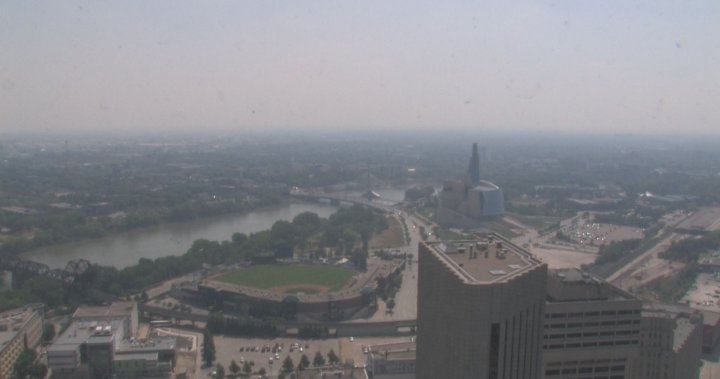After a record-breaking wildfire season, several organizations are teaming up with the City of Winnipeg to drill down on what should happen if the community’s air quality took a turn for the worse.
On Tuesday, hundreds gathered at Sergeant Tommy Prince Place on Sinclair Street for a simulation called AIR Aware.
The drill gauged how prepared the city is for an air quality emergency, ahead of what could be an active summer for wildfires.
“Given the dryness of the conditions through winter in a lot of areas across western Canada, as we’re hearing from our hazard experts, there is the potential for a busy wildfire season,” said Mike Olczyk, Winnipeg’s emergency management coordinator.
Olczyk said it’s uncertain how poor the air will need to be to trigger a real-time response as crews continue work on operational plans, but it’s likely it will be on the higher end of Environment and Climate Change Canada’s Air Quality Health Index.
Breaking news from Canada and around the world
sent to your email, as it happens.
To help inform plans, he said three waves of 100 volunteer actors tested intertwining organizational systems, boosting the experience of about 30 staff.
“Some may have medical issues, some may have young children…So, our staff will adjust to that,” said Shawn Feely, vice-president of the Canadian Red Cross for Manitoba and Nunavut.
“It’s designed to have things that will make the staff and volunteers think a bit,” he said.
The facility is complete with several features, including a first-aid station, snack and meal area, among other spaces.
Olczyk said, “We’ve got an area for a multicultural and quiet room. If there’s anyone that comes in that needs support through language services, that’s a component.”
In an emergency, the centre is planned to open for daytime into evening hours, he said, and is rigged to support 100 people flowing through.
He said these details, and others, will be re-evaluated in a post-practice discussion to see what went well or didn’t.
“The key is knowing who you’re working with and being able to think around corners, or make decisions on the fly,” Feely said. “If something’s not working in a real situation, then we’re able to have these conversations with different organizations.”
He said this kind of teamwork is the foundation of the operation.
“The Red Cross does not do these sorts of things alone. We work with multiple partners: Not-for-profit organizations such as the Salvation Army and Saint John Ambulance, along with a number of different levels of government,” he said.
All this, so that during an air quality emergency, all someone needs to do is show up for a breath of fresh air.
© 2024 Global News, a division of Corus Entertainment Inc.


